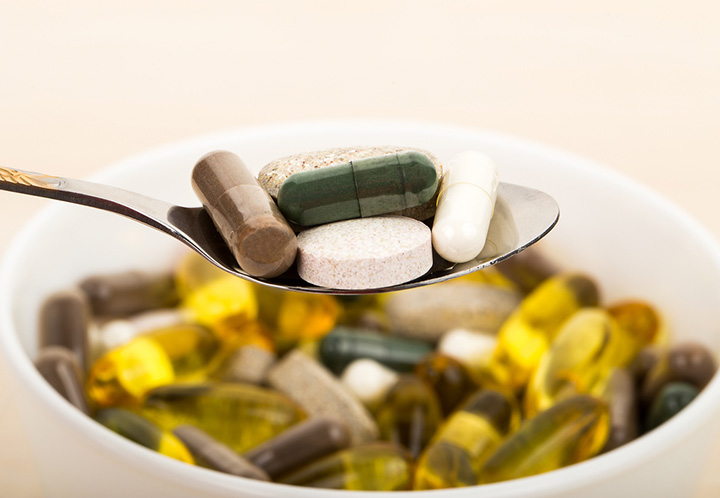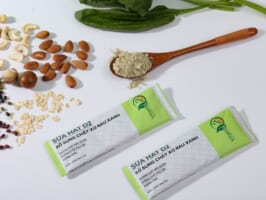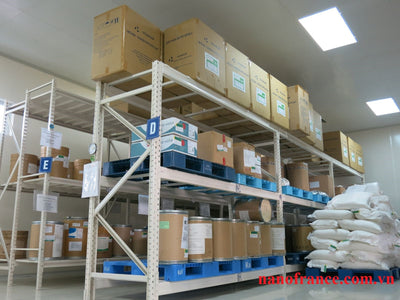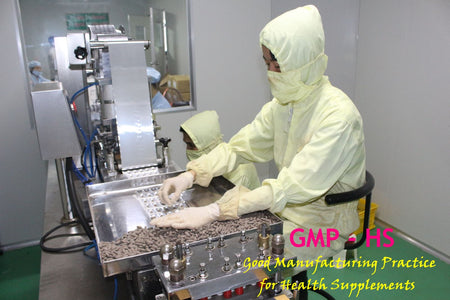FUNCTIONAL FOOD IN TABLET FORM
Functional foods play a role as a source of normal nutrition necessary for the body's activities. Therefore, the use of functional food products to help the body develop healthily is being used popularly and widely. However, currently on the market there are many different types of manufacturing specifications for different types of functional foods, making it difficult for consumers to choose. So what forms are functional foods in pill form prepared? The effects and advantages and disadvantages of different forms will be shared in the following article.
Functional foods are prepared in many different forms similar to pharmaceutical dosage forms including functional foods in the form of tablets, granules, syrups, liquids, etc.
Classification of functional foods in tablet form
Each dosage form has its own advantages and disadvantages, users choose the dosage form that suits their individual needs and preferences.

Types of functional foods in pill form
Functional foods prepared in tablet form have many outstanding advantages. In addition, tablet form is being widely applied to produce health-protecting functional food products, which are loved by many consumers.
Dietary supplements in tablet form are divided into two groups, tablets and capsules. These two forms provide a certain amount of active nutrients through the digestive tract. However, each tablet form has different advantages and disadvantages. Manufacturers choose based on nutritional factors, digestibility and absorption, and consumer preferences. procedure suitable production
Tablets
Tablets are the most common form of nutritional supplementation. Tablets have long been researched and developed as an effective way to deliver vitamins, minerals and other nutrients.
Tablets are made by compressing one or more powdered active ingredients to form a hard, solid tablet, coated with a fine powder and disintegrating in the digestive tract.
In addition to the active ingredients, tablets also contain inactive ingredients or excipients that bind all the ingredients in the tablet together, creating a stable structure. Excipients can be used to improve other properties of the tablet such as smell, taste, flavor and appearance.

Dietary supplement in tablet form
Tablets vary in their external shape, and can be round, disc-shaped, or tapered at both ends. The tapered shape makes them easier to swallow. Tablets are often coated with a special coating on the outside, which, in addition to enhancing their appearance, also prevents them from disintegrating in the stomach. This ensures that the tablet is absorbed only after it has entered the small intestine.
Capsule
There are two forms: hard capsules and soft capsules. Hard capsules are surrounded by a cellulose shell. The main ingredient is hydroxypropyl methyl cellulose (HPMC).
The hard capsule is divided into two parts: the body and the cap. The body has a smaller diameter and is filled with active ingredients and excipients in the form of dry powder or small pellets. The cap has a larger diameter and acts to seal the capsule.

Functional food capsules
Softgel capsules have a gelatin shell, the active ingredients are dissolved in an easily digestible liquid mixture (usually gelatin or similar substances). This structure helps the active ingredients to be easily released and absorbed after entering the body.

Dietary supplements in tablet form
Compare the advantages and disadvantages of tablets and capsules

Comparing capsules and tablets
Production cost
The cost of producing tablets is usually lower than that of capsules. Meanwhile, the dose of active ingredient in a tablet is larger than that of a capsule. On some types of tablets, there is often a horizontal line that helps divide the tablet into smaller parts for use when needed. The active ingredients in soft capsules dissolve in liquid, so the cost of production (raw materials, additives, technology, machinery) will also be higher.
Ability to digest and absorb active ingredients
In fact, when properly formulated, tablets and capsules have similar digestibility and absorption of active ingredients. A recent study of choline alfoscerate absorption in adults showed that both formulations had similar levels of absorption. However, capsules (both hard and softgels) were found to be more effective in a faster-acting setting in some cases of impaired gastric pH.
Stability and shelf life
Capsules are generally less stable than tablets in a variety of environmental conditions, especially in high humidity environments. Tablets generally have a longer shelf life. The gelatin or cellulose shell of capsules tends to break down more rapidly than tablets, so more stringent storage conditions are required.
Consumer preference
Capsugel, a capsule supplier, commissioned a study completed in 1997 by the Povlin Research Group, which looked at consumer preferences for herbal and vitamin dosage forms. The results showed that 74% of herbal users expressed a preference for capsules. Vitamin users preferred capsules over tablets. Ease of swallowing was the main reason (66%) for preferring capsules over tablets.

Consumers choose functional foods in capsule or tablet form
Nanofrance is proud to be the unit that brings modern technology to consumers.
Each dosage form such as hard capsules, tablets, syrups, granules... has certain advantages and disadvantages, however their role is to be an effective means of providing essential nutrition to users. NANOFRANCE is a functional food enterprise that owns advanced production technology, modern machinery, proactive in producing and supplying the market with functional food products with diverse types and forms, ensuring quality to optimize clinical effectiveness, serving the needs of health care and protection of consumers.









